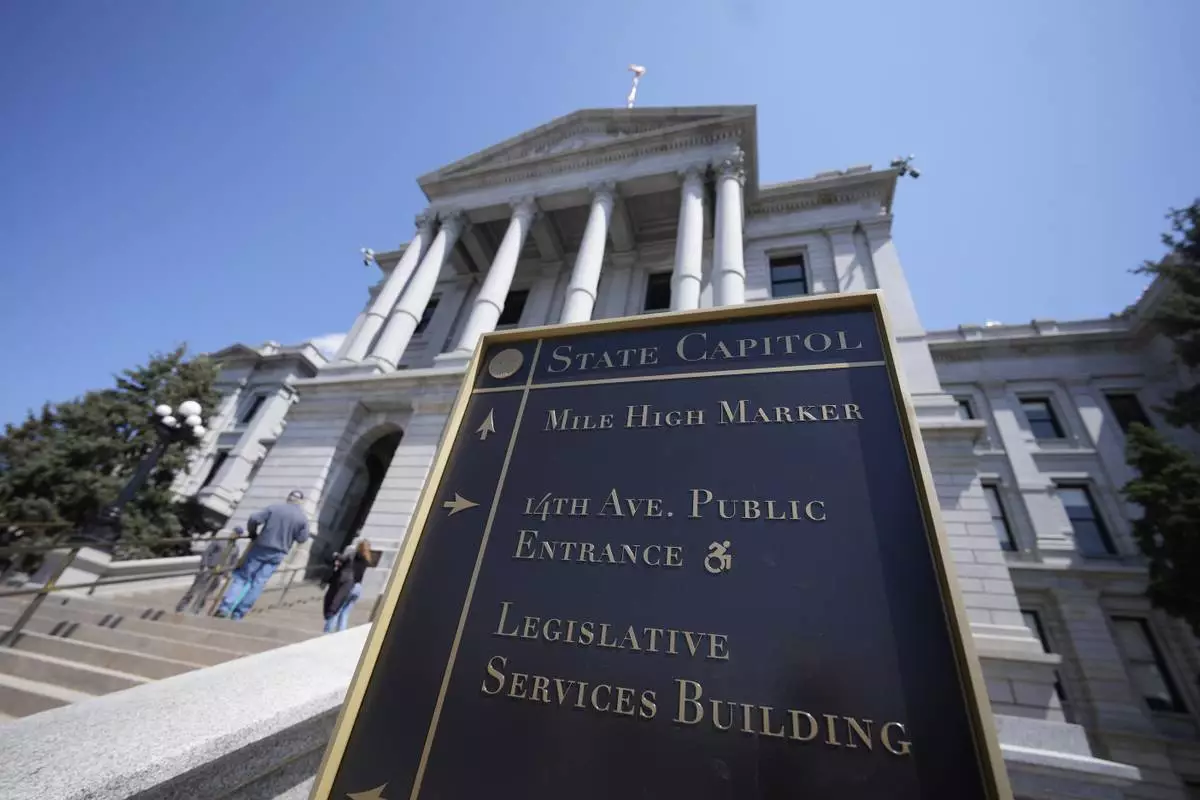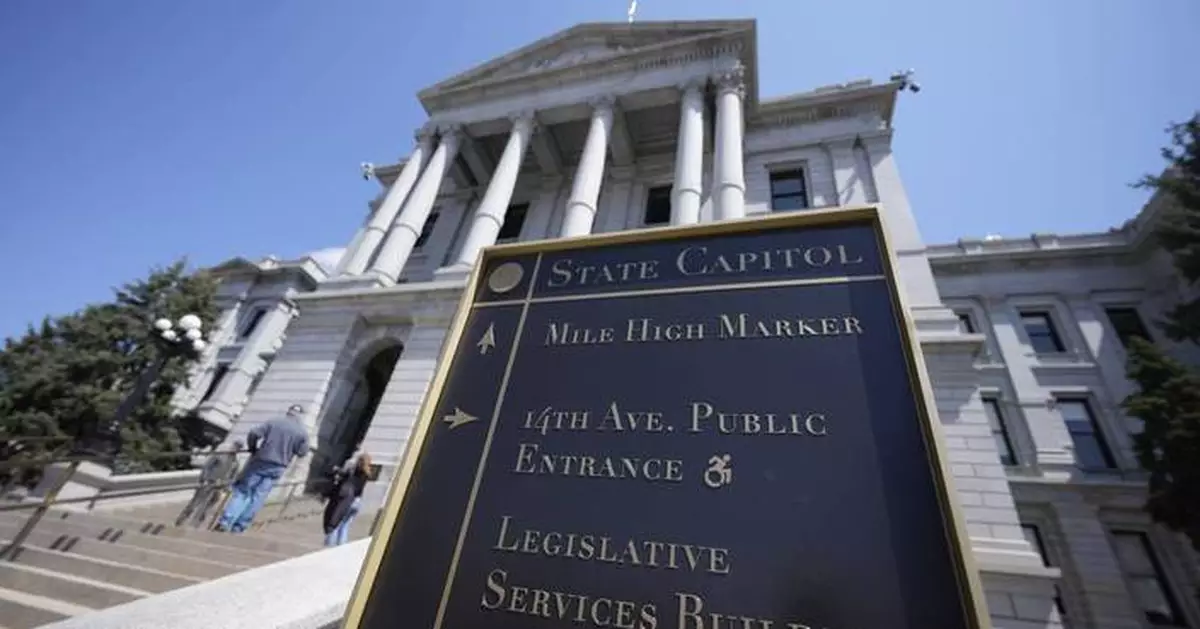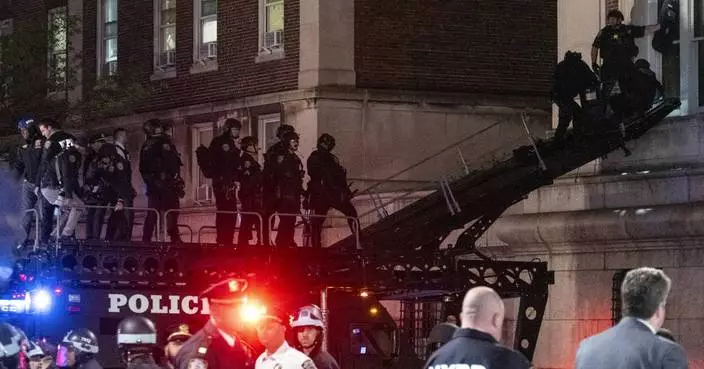DENVER (AP) — Colorado's Democratic-controlled House on Sunday passed a bill that would ban the sale and transfer of semiautomatic firearms, a major step for the legislation after roughly the same bill was swiftly killed by Democrats last year.
The bill, which passed on a 35-27 vote, is now on its way to the Democratic-led state Senate. If it passes there, it could bring Colorado in line with 10 other states — including California, New York and Illinois — that have prohibitions on semiautomatic guns.
But even in a state plagued by some of the nation's worst mass shootings, such legislation faces headwinds.
Colorado's political history is purple, shifting blue only recently. The bill's chances of success in the state Senate are lower than they were in the House, where Democrats have a 46-19 majority and a bigger far-left flank. Gov. Jared Polis, also a Democrat, has indicated his wariness over such a ban.
Last year, a similar bill died in committee, with some Democratic lawmakers citing concerns over the sweep of a ban and promises they made to their constituents to avoid government overreach affecting most gun owners’ rights.
Democrats last year passed and Polis signed into law four less-expansive gun control bills. Those included raising the age for buying any gun from 18 to 21; establishing a three-day waiting period between the purchase and receipt of a gun; strengthening the state’s red flag law; and rolling back some legal protections for the firearms industry, exposing it to lawsuits from the victims of gun violence.
Those laws were signed months after five people were killed at an LGBTQ+ nightclub in Colorado Springs last year. Soon, the state will mark the 25th anniversary of the 1999 Columbine High School shooting that killed 13 people. Other mass shootings in Colorado include 12 people killed in 2012 at an Aurora movie theater and 10 people killed in 2021 at a Boulder supermarket.
“This is the state where the modern era of the mass shooting began with Columbine,” Democratic Rep. Javier Mabrey said in urging fellow lawmakers to join other states that ban semiautomatic weapons.
Republicans decried the legislation as an onerous encroachment on the U.S. Constitution's Second Amendment. They argued that mental illness and people who do not value life — not guns — are the issues that should be addressed. People with ill intent can use other weapons, such as knives, to harm others, they argued.
Democrats responded that semiautomatic weapons can cause much more damage in a short period of time.
“In Aurora, when the shooter walked in that theater and opened fire,” Mabrey said, “and in less than 90 seconds shot up a room full of people. That cannot be done with a knife, that can’t be done with a knife.”

FILE - Visitors stand on the west steps of the Colorado Capitol, April 23, 2023, in Denver. Colorado's Democratic-controlled House on Sunday, April 14, 2024, passed a bill that would ban the sale and transfer of semiautomatic firearms, a major step for the legislation after roughly the same bill was swiftly killed by Democrats last year. (AP Photo/David Zalubowski, File)
WASHINGTON (AP) — After three straight hotter-than-expected inflation reports, Federal Reserve officials have turned more cautious about the prospect of interest rate cuts this year. The big question, after they end their latest policy meeting Wednesday, will be: Will they still signal rate cuts at all this year?
Wall Street traders now envision just a single rate cut this year to the Fed's benchmark rate, now at a 23-year high of 5.3% after 11 hikes that ended last July. Traders have sharply downgraded their expectations since 2024 began, when they had expected up to six rate cuts.
As recently as the Fed's last meeting March 20, the policymakers themselves had projected three rate reductions in 2024. Rate cuts by the Fed would lead, over time, to lower borrowing costs for consumers and businesses, including for mortgages, auto loans and credit cards.
Most economists say they still expect two cuts this year. But many acknowledge that one or even no rate reductions are possible. The reason is that elevated inflation is proving more persistent than almost anyone had expected. According to the Fed's preferred gauge, inflation reached a 4.4% annual rate in the first three months of this year, up from 1.6% in the final quarter of 2023 and far above the Fed's 2% target.
At the same time, the economy is healthier and hiring is stronger than most economists thought it would be at this point. The unemployment rate has remained below 4% for more than two years, the longest such streak since the 1960s. During the first quarter of the year, consumers spent at a robust pace. As a result, Chair Jerome Powell and other Fed officials have made clear that they are in no hurry to cut their benchmark rate.
In his most recent remarks two weeks ago, Powell indicated that the pace of price increases had essentially undercut Fed officials' confidence that inflation was steadily heading back to their target, thereby making rate cuts anytime soon less likely. He also said the Fed would forgo any rate cuts as long as inflation remained elevated. He stopped short, though, of suggesting that any new rate increases were under consideration.
“If higher inflation does persist,” the Fed chair said, “we can maintain the current level of (interest rates) for as long as needed.”
Most economists expect Powell to reinforce that message during the news conference he will hold after the Fed's meeting ends Wednesday. But he could go still further.
During his last news conference in March, for example, Powell said the Fed's rate was “likely at its peak” and that, “if the economy evolves broadly as expected, it will likely be appropriate” to start cutting rates this year.
If Powell avoids repeating that sentiment this time, it could suggest that the Fed is less likely to reduce its benchmark rate this year.
“If that (message) is dropped, I think it would be a much stronger signal that we have to hold rates higher for longer,” said Jonathan Pingle, chief economist at UBS.
Though economic growth reached just a 1.6% annual pace in the first three months of this year, a slowdown from the previous quarter, consumer spending grew at a robust pace, a sign that the economy will keep expanding.
That persistent strength has caused some Fed officials to speculate that the current level of interest rates may not be high enough to have the cooling effect on the economy and inflation that they need. If so, the Fed could even have to switch back to rate increases at some point.
“I continue to see the risk that at a future meeting we may need to increase (rates) further should progress on inflation stall or even reverse,” Michelle Bowman, a member of the Fed's Board of Governors, said in early April.
On Wednesday, the Fed may also announce that it's slowing the pace at which it unwinds one of its biggest COVID-era policies: Its purchase of several trillion dollars in Treasury securities and mortgage-backed bonds, an effort to stabilize financial markets and keep longer-term interest rates low.
The Fed is now allowing $95 billion of those securities to mature each month, without replacing them. Its holdings have fallen to about $7.4 trillion, down from $8.9 trillion in June 2022 when it began reducing them.
By cutting back its holdings, the Fed could contribute to keeping longer-term rates, including mortgage-rates, higher than they would be otherwise. That's because as it reduces its bond holdings, other buyers will have to buy the securities instead, and rates might have to rise to attract the needed buyers.
During its meeting in March, Fed official agreed to reduce the pace of its runoff to about $65 billion a month, according to the meeting minutes.
The Fed last reduced its balance sheet in 2019, and while doing so it inadvertently disrupted financial markets and caused short-term interest rates to spike that September. Its goal in slowing the pace at which it reduces its bond ownership is to avoid a similar market disruption by moving more methodically.

FILE - Federal Reserve Board chair Jerome Powell speaks during a news conference at the Federal Reserve in Washington, March 20, 2024. The Federal Reserve wraps up its two-day policy meeting Wednesday, May 1, 2024. Most analysts expect that the central bank will leave its benchmark borrowing rate alone for the sixth straight meeting. (AP Photo/Susan Walsh, File)











